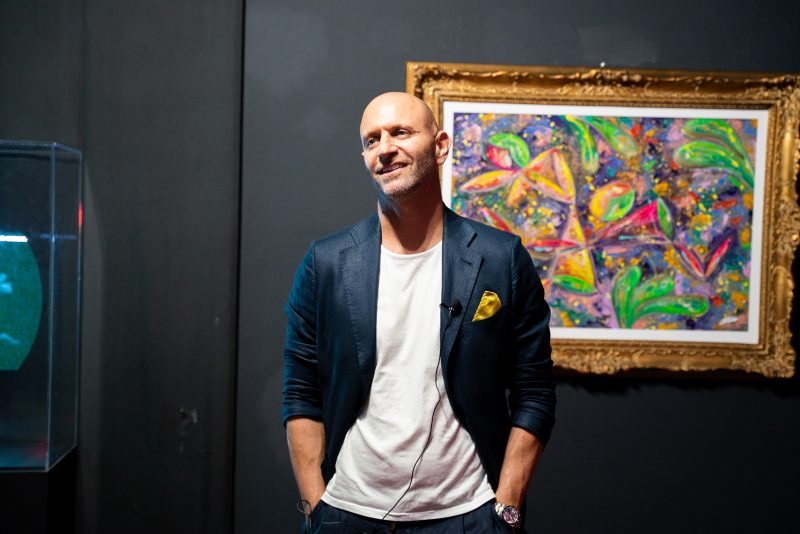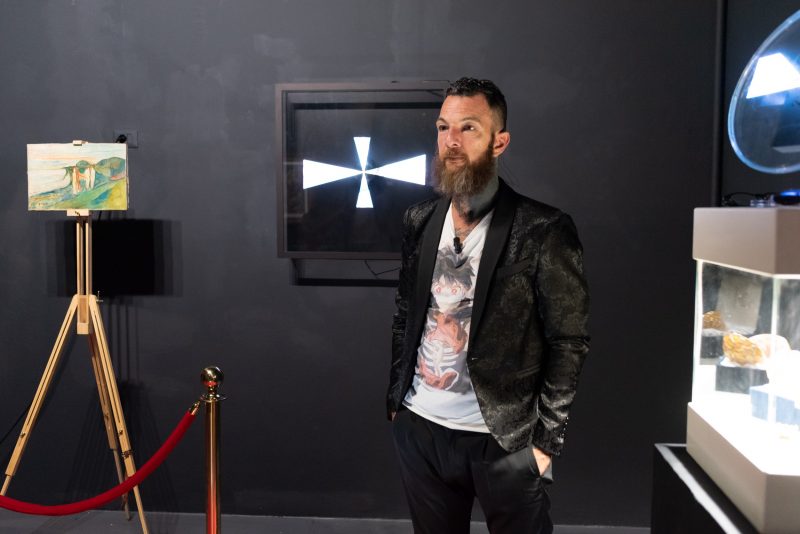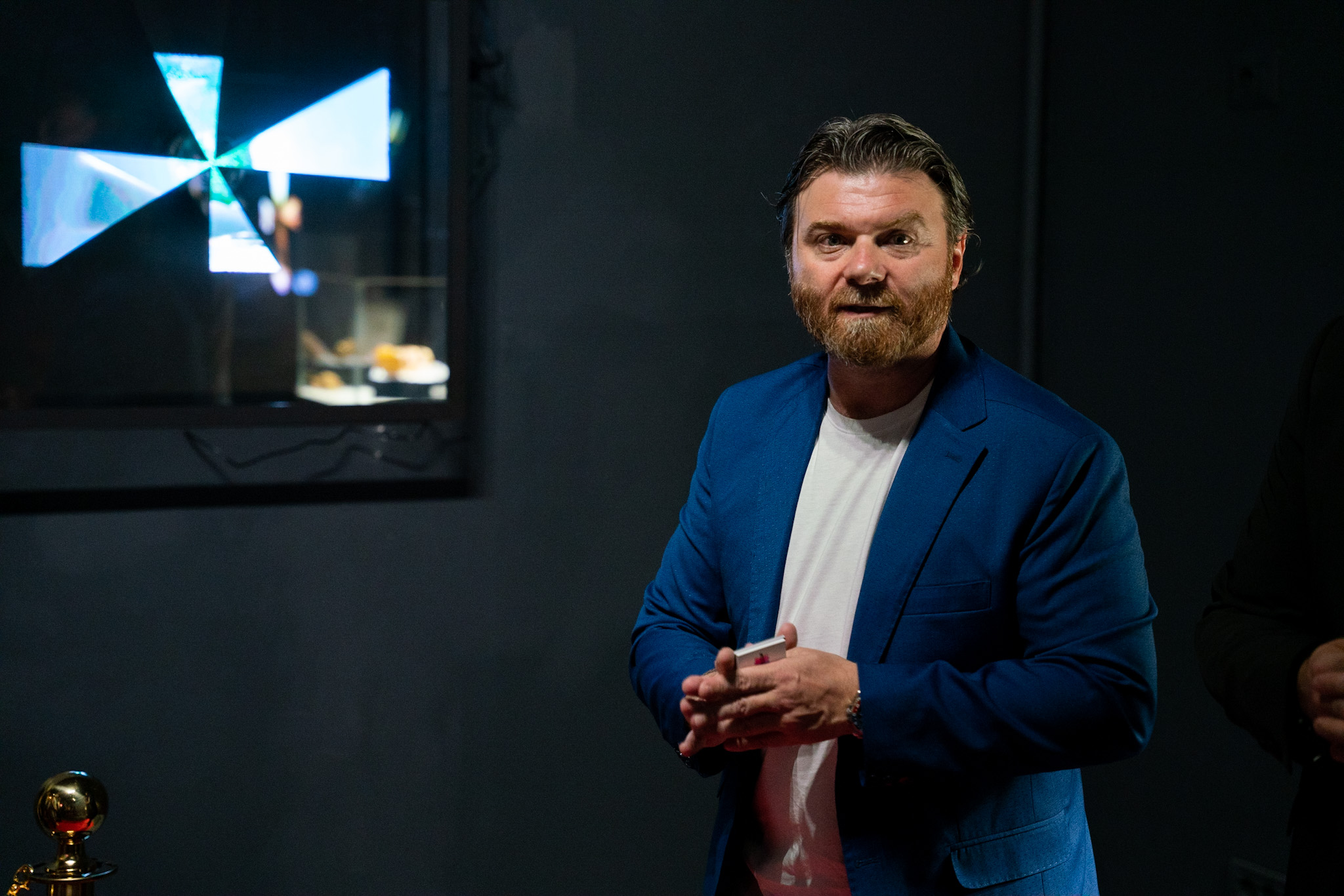Talk to Andy Warhol’s “Marilyn,” interact with a painting by Edvard Munch, and hear what a Faberge egg has to say. This and more is possible in San Babila Gallery In Milan, a space founded by an entrepreneur Francesco Colucci, which has been proposed as a new front-end site for digital art. latest exhibition project, Back to the futurecombined art, NFT, and artificial intelligence to not only immerse themselves in the metaverse, but also to experience the works on display in concrete form.
For a look at what’s happening in the world of digital art, metaverse and Nft, it is worth taking a trip to the San Babila Gallery in Milan, a place that has recently opened but is already a point of reference, in Milan and beyond, in the field of digital art.
Galleria San Babila, a new space for digital art

Founded by businessman Francesco Colucci, it hosted the event during Milan Design Week Back to the future. Itinerary of the exhibition, as well as a personal exhibition proposal for Cesar CattaniA, it has hosted three works of great value: an unpublished painting by Edvard Munch, a 1970s edition of “Marilyn” by Andy Warhol and a Faberge egg. He also displayed, in a custom black room, their digital replicas or NFT holograms equipped with artificial intelligence to interact and talk.
The meeting between art, NFT and artificial intelligence is made possible by the technology it has developed metwarda company founded jointly by Francesco Colucci with Antonio CilottoAnd the Mara Abraccio And the Eduardo Caligari. A digital service platform that creates content and tools midway between the physical and virtual experience. In the specific field of art, MetaWord deals with the creation of holograms that can represent the works of great masters or emerging artists, and then transforming them into a new form of NFT, which is dynamic and usable. The hardware and software development involved in this process includes the use of 3D scanners ,3D printers, and the development of computer vision algorithms to analyze and process the images. Additionally, software is needed to create the holograms and digital wallets for the NFTs.

event during Milan Design Week
Gallery project, from Back to the futurewhich sparked great interest during Milan Design Week: “Back to the future He looks carefully at the past but turns towards the future. Together with MetaWord, we’ve developed a new way to create NFTs using holograms, and we’ve gone even further, equipping these works with artificial intelligence. A way to make NFT material usable, to ensure you can try it wherever and how you want, in an exhibition like at home or in the office.”
The event was then an opportunity to introduce another service offered by MetaWord: GMetaWord, the first platform/application where users will be able to share, sell or promote an NFT, accompanied by a hologram. The goal is to create a parallel world where you can view, buy and sell artwork, which can also serve as a showcase for music, objects and buildings.
We asked Francesco Colucci to tell us more about his project that opened at the San Babila Gallery, which anticipates two more openings by 2023.
What prompted you to enter the world of art and NFT and found the gallery?
As an entrepreneur, I have given birth to many projects over the years. Among them is the Artistic and Luxury Investment Fund, which deals with art and luxury, but with the peculiarity of giving investors the opportunity to benefit from the fund’s investments. With this idea, I created an art gallery format that started with the opening of the San Babila Gallery in Milan on December 3, 2021. At first it was a private gallery designed only for money investors, but today it is an open space and free for any one. In fact, I realized that the show can have a life independent of the life of the box.
What are the activities of the gallery since the opening until today?
Since the opening we have already organized many events and exhibitions. Fashion show, exhibition by street artist Endless in February, group show with artists presented at the San Marino Pavilion at the Venice Biennale created in collaboration with London’s Cris Contini Contemporary. And a solo exhibition by Cesare Catania in May with an idea Back to the future.
How did the collaboration with Cesar Catania arise?
I’ve always been very attentive to market dynamics, and right now there’s a lot of excitement about the metaverse and NFT. I started approaching this sector about a year and a half ago and immediately noticed the amazing work that Cesare Catania has done. I managed to make a connection and suggested to him to organize an exhibition at the fair. In the meantime, I’ve been building MetaWord with an idea in mind: everyone wants to do it and talk about the NFT and the metaverse, but no one really knows what it is. Some believe that NFT is equivalent to an animated gif. And so, with my partner, Antonio Cilotto, who specializes in hardware and software development, we set out to develop MetaWord technology, a company that presents itself as a leading service provider in the metaverse and NFT marketplace.
What does MetaWord create?
We make Nft fun and tactile. Not something that can be kept in a PC folder, but a real work of art, a hologram and equipped with artificial intelligence, to be displayed and enjoyed in a tangible way in a gallery, hotel or home. We made 3D fan frames that give life to a 3D picture. Back to the future It was born from a combination of Cesare Catania and the work we’ve been doing with MetaWord. We reconstructed our gallery in a virtual world, where visitors can float in space and discover works in a virtual space without walls. That’s why we added a gallery of three great works to reproduce it in a 3D image one can interact with, proving that it is light years ahead of the classic NFT concept. Through these works it is possible to take control of the house: a reproduction of Andy Warhol’s “Marilyn” can then turn off the heating or turn on the music we want. At the moment we are the only ones in the world who have done that.
What is the reaction of collectors to the phenomenon of oil in art? What did you notice?
In the case of NFT, everything is moving in a fast and unpredictable way: we are in year zero, just as the Internet was born. Changes are on the agenda, but the NFT phenomenon is destined to continue and to develop in an increasingly larger scale. Many collectors, associated with physical art, have begun to create NFTs associated with their works, as long as they have the rights. Then there are those who instead view the world of NFTs as a form of investment. It is estimated that nearly $1 billion is traded in NFT every day. We are in Italy behind the United States. Despite this, with MetaWord we want to present ourselves as an innovative Italian company that has created a unique technology.
what are you doing now?
There are many projects in the pipeline. We are developing other prototypes of display cases and frames for rendering holograms and then have fun developing a series of patents related to the NFT world that are now in the filing stage. According to my predictions, MetaWord will be released to the public in a year and a half. We are a team of 70 people working with passion, all united in a challenge that wins by speed. We did not expect the success achieved during Salone del Mobile: foreign companies and businessmen approached us, some asked us to buy us or become our partners, but our project is an Italian project with pride, which in a few years we will be able to export abroad. We understood that many people would like to live the NFT experience, so we decided to make the Black Room permanent, along with the Metaverse classroom, where the display cases are, and turn it into a MetaWord Project Room. Here it will always be possible to discover our experiences.
For other content, sign up for the Forbes.it newsletter here.

“Infuriatingly humble alcohol fanatic. Unapologetic beer practitioner. Analyst.”


